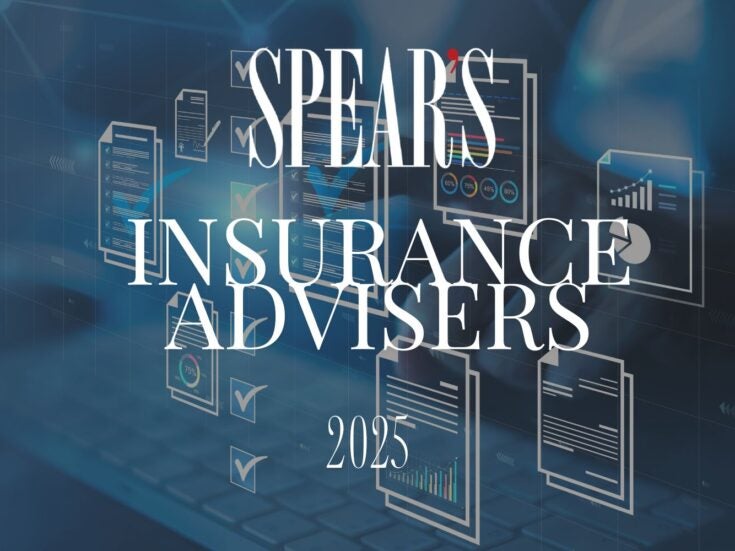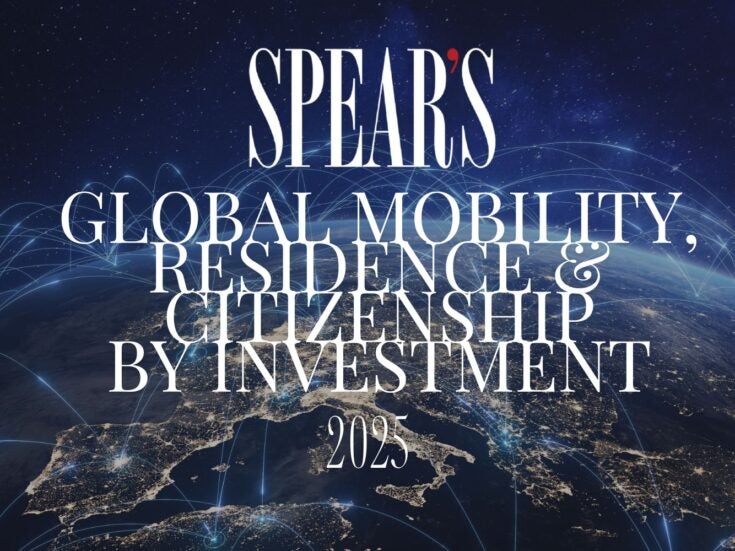Evaluating asset managers is no easy business so one investment consultancy employs an in-house psychologist to keep an expert eye on them, says Christopher Silvester.
Evaluating asset managers is no easy business — so one investment consultancy employs an in-house psychologist to keep an expert eye on them, says Christopher Silvester.
When Stamford Associates, the UK-based investment management consultancy, sends a team of analysts to conduct an assessment of an asset manager on behalf of one of its institutional clients, the line-up will include a statuesque, elegantly dressed Danish woman named Janet Larsen. But unlike her colleagues Larsen is not an investment expert. Instead, her academic and professional background is in psychology, and she will be there to evaluate the mindset of the person who is being entrusted to manage clients’ assets.
“It doesn’t say on my card what I do,” she says. “Not because we are being secretive, but we’ve tried with different titles and nothing really seems to work.” Stamford Associates is known for having Larsen on board and so it surprises her that some managers are unaware of her specific role. “Everything is information to me – this tells me they haven’t done their homework prior to our meeting. Sometimes they make the assumption that I’m just another analyst. This tells me something too.”
Curiously, she has found that those managers whom she has viewed to have the psychological make-up that would allow them to feel relaxed about her role, even to be intrigued by it, will notice that her questions come from a different angle and at some point will acknowledge this in some way, a wink or a comment, often a joke. “Those who would feel threatened by my role, on the other hand, never pick up on it,” she says. “That’s your classic Freudian defence mechanism at work.”
Larsen followed an initial career as an international fashion model with psychology studies at Stamford University, in California, and Oxford University, specialising in a branch of experimental psychology called metacognition – thinking about thinking. She later switched to clinical psychology, working in a psychiatric hospital in Copenhagen and specialising in depression and suicide.
Returning to the UK in the mid-1990s, she entered the world of management consulting and executive coaching. She had known Stamford Associates’ chief investment officer, Nathan Gelber, for years and it gradually occurred to him that Stamford Associates might benefit from having someone on board who thinks differently, who focuses not on numbers and statistics but on what’s really going on in human beings and between human beings. “It was an innovation then, and Stamford Associates is still unique in this regard today,” says Larsen, “I am amazed no one has followed suit.”
Although initially conceived of as a part-time role, it soon became full time. “It has unfolded in ways we had not anticipated,” Larsen says. Initially the role was conceived to bring another thread of data to investment deliberations. “My thread of data would be all manner of things about people at asset management firms such as their decision making and their influencing processes, their skills, their integrity, teamwork and the company culture. In practice, a big portion of what I do is also facilitating our own internal decision-making processes, because we are prone to the same sort of cognitive biases and human foibles I look out for in asset managers.”
One of the challenges she faced in the early years was damping down expectations about what psychological science could bring to the table. “Psychology is not a magical art. There were two things I heard myself repeating. One was in response to expectations that I could predict the future: ‘I do not have a crystal ball. I cannot tell you what is going to unfold.’ The other was when I made an observation that my colleagues protested they would rather not hear: ‘I’m not Tinkerbell, I can’t make it go away.’”
Stamford Associates, which is owned by a member of the Liechtenstein royal family, only deals with institutional investors, mostly pension funds, although it has a well-established relationship with St James’s Place, the wealth-management firm, and it also advises MMIP, multi-manager provider and a fund of funds. “Our client base is very stable,” she emphasises. “In the ten years I have been at Stamford Associates, we’ve said goodbye to only two clients, and it was a mutual decision.” Stamford Associates has about a dozen institutional clients, then any number of clients that could be in the umbrella fund called MMIP.
Most of Larsen’s work is “asset-manager-facing”. She takes part in the exercise of researching new asset managers and monitoring the incumbents, working hand-in-glove with Stamford Associates’ analysts. Indeed, she rarely sees managers on her own. Once a potential asset manager has made it through the first phase of research, Stamford Associates’ team arrange a visit.
“The managers are asked to speak about their investment philosophy, about the process they have developed to implement this, about the discipline that underpins this, and about the organisation they have in place to support it. We will assess whether they actually do what they say they do, and that’s where most managers fall down.” Sometimes Larsen finds herself at loggerheads with the analysts “What I see can seem so intangible to my colleagues, and that gets stacked up against all manner of concrete ‘facts’.
It has taken time to build the confidence to push back and to build a track record of credibility with them. Now, they can be enamoured with a manager from their perspective and I can say, ‘Not over my dead body!’ Fortunately though, what I see usually dovetails with what the analysts are seeing.”Stamford Associates are proponents of fundamental investing, Larsen explains. “We prefer managers who do a great deal of due diligence on the underlying companies. A favourite is managers who come out of a private-equity background: they assess a company as if they were buying it outright.”
Stamford Associates closely monitors all the asset managers with whom it places capital. Again, Larsen’s skills in evaluating patterns of cognitive behaviour are much prized in this regard. One of the classic signs that there might be a problem is if a manager claims to be a long-term holder, but the analysts discover he actually has a high turnover rate.
“Our analysts can look at the fundamentals and the news flow for those companies, as well as the manager’s holding pattern,” she says. “And then we start asking ourselves questions. Could the manager be chasing the news flow or the herd, or could he be lacking conviction in his own investment theses? When we meet the manager armed with that kind of preparation, I can usually get a pretty good sense of the truth of the matter.”
“When I see a manager chasing conviction in his holdings,” she elaborates, “the question for me is always: are they doing the homework they need to do to underpin their own investment case?” She concedes that in the current market conditions “you have to keep an open mind, in that some people have chosen to refresh their portfolios, because they are looking at a new paradigm in some ways.”
What she is currently finding is that those asset managers who have traditionally been “puritans about bottom-up, fundamental stock-picking and don’t make macro calls and couldn’t care less about sector representation in their portfolio or how closely they approximate a benchmark”, may not be able to afford the luxury of such a pure approach when a tsunami is battering the market. “Unless,” Larsen adds, “They genuinely are long term investors and, to paraphrase Keynes, ‘They believe they can remain solvent for as long as the market is irrational.’”
It is not just the state of a portfolio that might give cause for concern. Larsen and her colleagues need to be certain that an asset manager has the organisational resources to underpin his process. Where is the pipeline of new ideas, the life-blood of a portfolio? Is a manager properly resourced to be generating new ideas and also to be doing the work necessary to retain warranted conviction in the existing holdings?
Something Larsen bemoans is when a rigorously disciplined asset manager appears to drift to what she calls fingertip investing. “Managers may start off being highly disciplined about their process, but over time, if they are affected by being feted as star managers, they can begin to believe that investment nous is in their bones. We want managers to have genuine conviction in their holdings, underpinned by the necessary due diligence. Their conviction is often demonstrated by their taking sizeable and overweight positions.
So we’re looking for this confidence, this conviction, but at the same time we need somebody to have just enough self-doubt that they’re willing to underpin their activities with a lot of discipline, and a lot of self-questioning. We want the confidence – in his holdings, in his abilities – but not to the extent that the manager thinks he doesn’t need to knuckle down anymore.”
In the turmoil of a bear market the pressure of redemptions is a factor that is potentially damaging to an asset manager’s portfolio, which is one reason why Stamford Associates doesn’t just look at a manager’s portfolio but also at how smart he is in selecting his client base. “You don’t want to get into bed with hot money,” says Larsen. “You do see that coming home to haunt managers. A lot of managers are getting hit by fund of funds redeeming; they were not able to determine the nature of the underlying investor.”
We are wary of asset managers who invest in stories or who trade a lot and generate a lot of frictional costs in the portfolio. Also, one of the things I look for when we’re interviewing managers is a genuine sense that we’re sitting on the same side of the table, that we’re not opponents on some level.
Larsen believes there is no such thing as the ideal Stamford Associates manager. “Picking stocks and constructing a portfolio should be a fairly straightforward exercise, and some practitioners argue it is a simple one, but the psychological make-up of man is enormously complex. What we need is a good match between someone’s cognitive style, their personality, motivation set, their biases and foibles, etc., and the espoused investment philosophy, the investment process and the support organisation underpinning that.
“Most individual investors don’t have access to an organisation that does the kind of sophisticated due diligence and monitoring we do, let alone institutional investors. Knowing what I know now, I am in awe of the challenge these people face.






